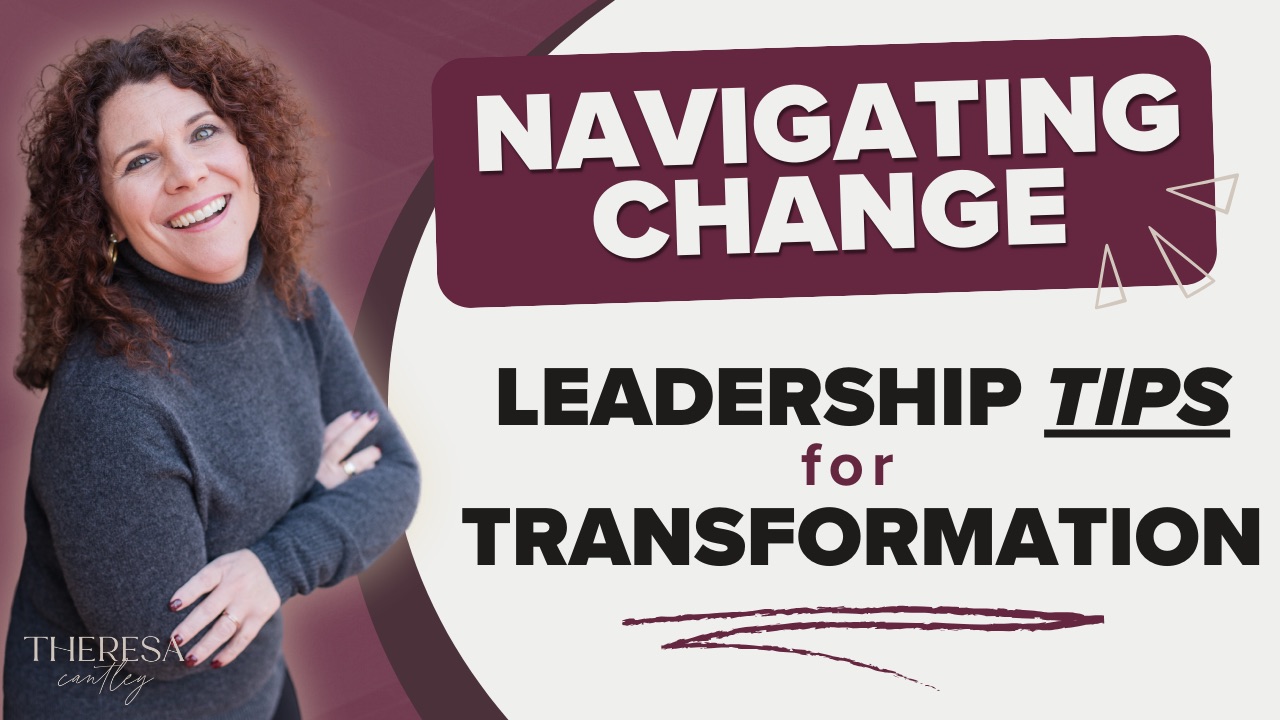When you hear the word change, what comes to mind? For many people, it’s resistance, stress, or that dreaded feeling of pushing a boulder uphill. But for others, change can be an exciting opportunity for growth and transformation. As leaders, CEOs, and business owners, we sit right in the middle of that tension. Our job is to not only navigate change ourselves but to bring our teams with us.
That’s exactly what this episode of C-Suite Mentor is all about. In this first installment of the Amuse Bouche, Leadership Bites series, I’m sharing how to lead your team through challenges and change so they come out stronger on the other side. Think of this series as a light but powerful leadership “bite.” It’s a snippet to get your mind working and give you actionable strategies for leading with confidence in seasons of transition.
Because the truth is, leadership in organizational change (especially when your team is change-averse) isn’t about pushing harder. It’s about showing up differently and summoning the best of who you are, so your team can become the best of who they are.
Summon the Best of Who You Are
The very first step in leading through change is internal. When challenges come, you have to summon the best of who you are. That means doing the hard inner work: regulating emotions, zooming out to see the big picture, and showing up with integrity and clear intention.
It’s easy to let stress dictate your decisions, but your team needs a leader who can be the difference-maker and the steady hand. When you rise to that level, you give others permission to do the same.
You Need Both Empathy and Conviction
We hear the word empathy a lot in leadership conversations, but it’s not just a buzzword. Empathy is recognizing reality (the challenges of the economy, technology shifts, rising costs, or even something as disruptive as a fire in your business) and still finding a way forward.
But empathy doesn’t mean wavering. Leaders must balance conviction with adaptability. You have to be clear about why change is happening, while also listening deeply to your team’s concerns. That “dance” between holding the vision and honoring other perspectives is where trust is built.
The Three Ways People Respond to Change
When faced with transformation, people usually fall into one of three categories:
They Resist It: They avoid tough conversations or decisions and cling to the comfort of the status quo, even if it’s not working. Unfortunately, resisting change comes at a cost. Prolonging necessary decisions, like letting go of toxic employees, can drain hundreds of thousands of dollars from a business.
They Deal With It: This group recognizes that something needs to shift. They may not have all the answers, but they’re willing to try and handle the situation.
They Lean Into It: These are the people who see challenges as an opportunity. They know growth and new solutions are on the other side of discomfort. Leaning in is where innovation happens and where businesses truly begin to scale.
How to Get Your Team Into the Flow Zone
As your vision expands, it stretches your team. At first, it feels uncomfortable. Then it begins to demand more from everyone. And finally, when the team adapts and aligns with the vision, you enter the flow zone. This is where momentum, energy, and creativity accelerate, and where transformation becomes reality.
The key is not to shy away from the friction along the way but to use it as fuel for growth.
Three Steps for Leadership Through Organizational Change
So how do you take this from theory into practice? Here are three steps to start applying right now:
1. Define the Vision
Be transparent about why change is happening. Define the “because,” whether it’s because costs are rising, because the business needs to restructure, or because the industry is shifting. The clearer the “because,” the easier it is for your team to align.
2. Set a Plan With Your Team
Co-create the strategy. Assign roles, establish accountability, and involve your people in building the solution.
3. Be the Example
Teams don’t just listen to what leaders say; they watch how leaders act. When you do the internal work to lead with strength, steadiness, and clarity, your team will notice and be more likely to align.
Leadership Through Organizational Change and Challenges: Some Encouragement
Change will always bring resistance, uncertainty, and maybe even drama. But it also brings growth, creativity, and the opportunity to build a stronger business and culture. As a leader, you’re shaping the future of your organization.
Summon your best, lead with empathy, and keep your eyes on the vision. That’s how you move from resistance to flow.
Resources Mentioned
Schedule a Virtual Coffee with Theresa
Book a C-Suite Snapshot with Theresa
Related Episodes
5 Tips to Be an Effective Listener and Build Deeper Connections in a Fast-Paced World
How to Navigate Business Challenges with the SACK Framework
What Makes a Good Leader?: 9 Leadership Traits That Matter Most


